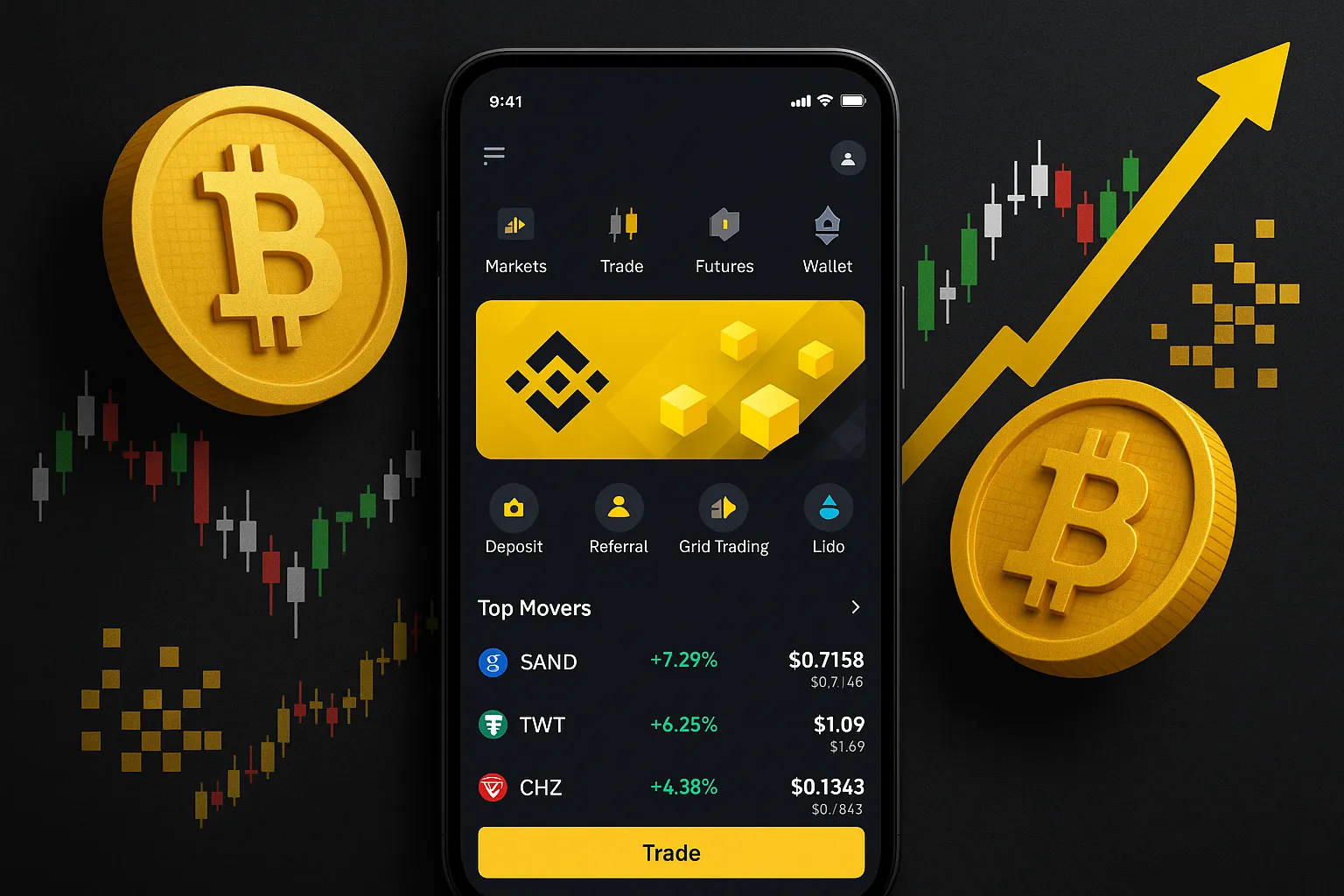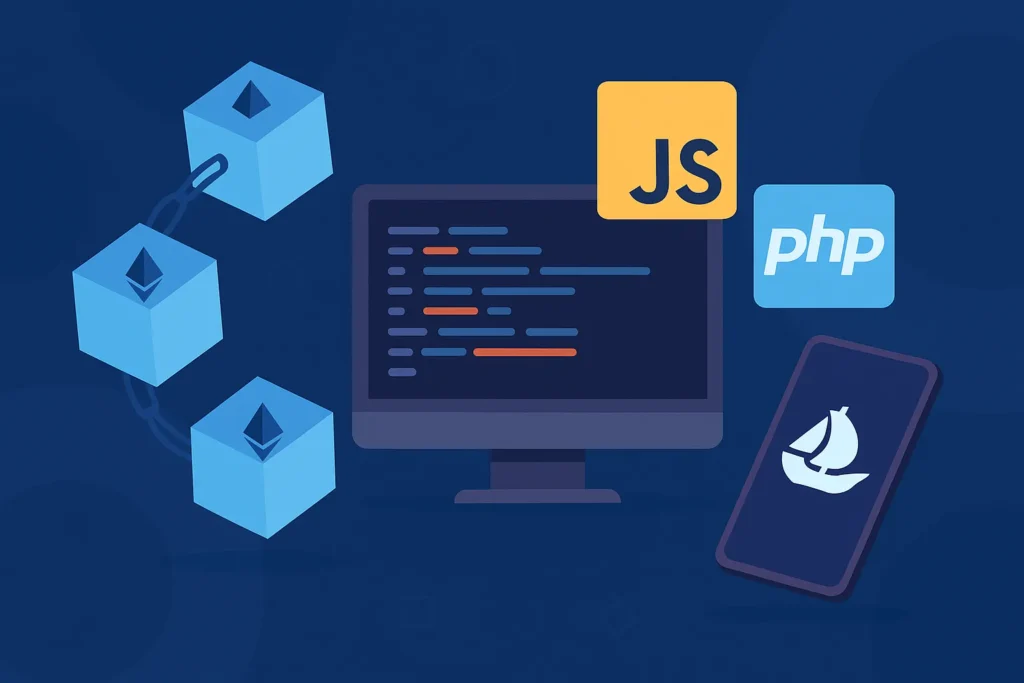Binance has become a household name in the world of cryptocurrency trading. business model of Binance Launched in 2017, it rapidly evolved into the largest crypto exchange by trading volume, serving millions of users across the globe.
What makes the business model of Binance so compelling is its combination of low-fee trading, a massive range of coins, innovative financial products, and an ecosystem of services that go far beyond a basic exchange. From spot and futures trading to staking, NFTs, and payment solutions, Binance has built a platform that keeps users engaged and spending.
For startup founders looking to build the next big thing in crypto, studying how Binance monetizes its platform offers invaluable lessons. Understanding this blueprint can help you avoid costly mistakes and build a resilient, profitable exchange that attracts both retail and institutional traders.
What is Binance & How It Works
Binance is a comprehensive cryptocurrency platform that solves multiple problems for traders and investors.
The Problem Binance Solves:
Before Binance, crypto exchanges were fragmented, expensive, and lacked liquidity. Users struggled to find a single platform offering:
- A large selection of trading pairs
- Low transaction fees
- Advanced trading tools
- Security and liquidity
Binance changed this by combining all these elements in one streamlined platform.
Who Uses Binance:
- Individual crypto traders and investors
- Institutions managing large trading volumes
- Blockchain startups launching tokens via Binance Launchpad
- Users seeking DeFi services like staking, lending, and earning yields
How Binance Work Operates:
At its core, Binance operates as a centralized exchange but has expanded into a diversified ecosystem that includes:
- Spot trading for buying and selling crypto
- Futures and margin trading with leverage
- Staking and savings for passive income
- NFT marketplace for digital collectibles
- Launchpad for token sales
- Binance Card for spending crypto
- Binance Pay for merchant payments
By offering this range of products, Binance retains users in its ecosystem while earning revenue from multiple sources.
Read More : What is Binance App and How Does It Work?
Who Binance’s Target Users Are
Binance serves a wide spectrum of users, each with unique needs and behaviors. Here’s a look at the primary customer segments:
- Retail Traders:
Individuals buying and selling cryptocurrencies for investment or speculation. This is the largest group by volume and frequency of transactions. - Professional and Institutional Traders:
Hedge funds, family offices, and trading firms who require advanced tools, API connectivity, and large liquidity pools. - DeFi Enthusiasts:
Users interested in staking, liquidity farming, and decentralized finance products within the Binance ecosystem. - Blockchain Startups & Entrepreneurs:
Founders who launch tokens through Binance Launchpad or list their coins on the exchange to reach a global audience. - Merchants & Consumers:
People using Binance Pay and Binance Card to make everyday transactions using crypto. - NFT Collectors:
Users buying and selling digital art and collectibles on the Binance NFT Marketplace.
This diversified audience allows Binance to spread its risk and tap into multiple revenue streams.
Features That Support the Business Model
Binance’s success comes from a set of core features designed to generate revenue and keep users engaged. Here are the most important ones:
- Spot Trading Engine
- Supports hundreds of crypto pairs with deep liquidity and low fees.
- Generates revenue through trading commissions.
- Supports hundreds of crypto pairs with deep liquidity and low fees.
- Futures and Margin Trading
- Enables leveraged trading up to 125x, attracting pro traders.
- Charges funding fees, interest on borrowed funds, and higher trading fees.
- Enables leveraged trading up to 125x, attracting pro traders.
- Binance Launchpad
- A platform for new token sales and Initial Exchange Offerings (IEOs).
- Earns listing and advisory fees from project teams.
- A platform for new token sales and Initial Exchange Offerings (IEOs).
- Staking and Earn Products
- Users lock up tokens to earn yields.
- Binance takes a percentage of staking rewards.
- Users lock up tokens to earn yields.
- NFT Marketplace
- Facilitates buying and selling NFTs with transaction fees on every trade.
- Facilitates buying and selling NFTs with transaction fees on every trade.
- Binance Card and Pay
- Lets users spend crypto in real-world stores and online.
- Generates interchange fees and spreads on conversions.
- Lets users spend crypto in real-world stores and online.
- BUSD Stablecoin
- Binance’s own stablecoin used across the platform.
- Increases retention and provides liquidity while generating interest income.
- Binance’s own stablecoin used across the platform.
These features are designed to cross-sell services, retain customers, and maximize lifetime value.
Read More : Best Binance Clone Scripts in 2025: Features & Pricing Compared
Revenue Streams of Binance
Binance has built a multi-layered revenue model that doesn’t rely on any single income stream. Below is a clear breakdown:
| Revenue Stream | How It Works |
| Trading Fees | Charges a small percentage (0.1%) on each spot trade. Higher fees for futures and margin trades. |
| Margin Interest | Earns interest when users borrow funds to trade with leverage. |
| Withdrawal Fees | Small fees applied when users move assets off-platform. |
| Staking Commissions | Takes a share of rewards earned by users who stake tokens via Binance Earn. |
| Token Listing & IEO Fees | Charges projects to list their coins or launch token sales through Binance Launchpad. |
| NFT Transaction Fees | Collects a percentage of each NFT sale and auction. |
| Fiat Gateway & Card Fees | Earns conversion fees and interchange on fiat deposits, withdrawals, and card spending. |
| Interest on Custodial Funds | Generates income on idle balances and stablecoin reserves held in custody. |
Quick Breakdown of Each Stream:
- Trading Fees:
The primary driver of revenue, given Binance’s massive daily trading volume. - Margin Interest:
A significant source, especially from institutional traders using leverage. - Withdrawal Fees:
Modest but consistent as users move funds in and out. - Staking Commissions:
Passive income for Binance as millions of users stake tokens. - Listing & IEO Fees:
Paid by projects eager to access Binance’s global user base. - NFT Fees:
Growing rapidly as the NFT market expands. - Fiat Gateway Fees:
Adds an additional layer of monetization beyond crypto trading.
Cost Structure and strategy
Running Binance at scale requires substantial investment across multiple operational areas. Here are the main costs involved:
- Technology Infrastructure:
- Servers, cloud hosting, data centers, and real-time trading systems that must handle billions in daily volume.
- Ongoing R&D to improve speed, reliability, and security.
- Servers, cloud hosting, data centers, and real-time trading systems that must handle billions in daily volume.
- Regulatory Compliance:
- Licensing fees, legal counsel, and compliance teams ensuring Binance meets local regulations in every jurisdiction.
- Costs related to anti-money laundering (AML) and Know Your Customer (KYC) systems.
- Licensing fees, legal counsel, and compliance teams ensuring Binance meets local regulations in every jurisdiction.
- Security and Insurance:
- Significant spending on cybersecurity tools and personnel.
- Insurance premiums to protect user funds against breaches.
- Significant spending on cybersecurity tools and personnel.
- Marketing and Customer Acquisition:
- Global advertising campaigns, referral bonuses, influencer partnerships, and promotions to attract new users.
- Global advertising campaigns, referral bonuses, influencer partnerships, and promotions to attract new users.
- Customer Support:
- Multilingual support teams handling user inquiries 24/7.
- Multilingual support teams handling user inquiries 24/7.
- Operational Staff:
- Developers, product managers, compliance officers, and leadership teams worldwide.
- Developers, product managers, compliance officers, and leadership teams worldwide.
- Payment Processing Fees:
- Fees paid to banks and payment processors to handle fiat transactions.
- Fees paid to banks and payment processors to handle fiat transactions.
While Binance generates huge revenues, these operational costs are critical to maintaining its dominance and reputation.
2024–2025 Innovations or Updates
Binance continues to evolve to stay ahead of the competition and comply with ever-changing regulations. Here are some of the most notable updates and innovations shaping its business model:
- Enhanced KYC and Compliance Measures
Binance has rolled out stricter KYC verification in most regions, aiming to strengthen compliance and improve user trust. - Expansion of Binance Pay
Binance Pay is seeing rapid adoption, with new merchant integrations that allow users to spend crypto seamlessly online and offline. - Launch of New Earn Products
The platform has introduced more flexible staking options and “Auto-Invest” plans, encouraging long-term holdings and creating predictable revenue streams. - NFT Platform Upgrades
Binance’s NFT marketplace now includes multi-chain support, lower fees, and exclusive partnerships with high-profile creators. - Regulatory Licensing in Multiple Countries
Binance has secured licenses in jurisdictions such as France, Dubai, and Australia, positioning itself as a compliant exchange in major markets. - Institutional Services Expansion
New custody solutions, OTC desks, and VIP programs tailored for institutional investors are driving higher trading volumes. - Binance Launchpool and New Tokens
Launchpool has become a popular mechanism for users to earn new tokens by staking BNB and BUSD, further strengthening token utility.
These updates highlight Binance’s focus on regulatory alignment, product diversification, and ecosystem stickiness.
Takeaways for Startup Founders
If you’re planning to build your own crypto exchange or fintech platform, Binance’s business model holds valuable lessons. Here are key insights to keep in mind:
- Diversify Revenue Streams
Don’t rely only on trading fees. Incorporate staking, margin lending, NFT trading, fiat gateways, and other complementary services to stabilize income. - Invest in Compliance Early
Regulatory hurdles are only getting stricter. Bake KYC, AML, and licensing considerations into your business plan from day one. - Prioritize Security
A single breach can damage your brand beyond repair. Allocate budget to cybersecurity, insurance, and 24/7 monitoring. - Build an Ecosystem, Not Just an App
Binance succeeded by offering a full suite of tools—wallets, staking, payments, and launchpads—to keep users engaged over the long term. - Make UX Simple, Even for Complex Products
Binance’s interface is beginner-friendly but still offers powerful tools for pros. That balance is critical.
Read more : Reasons startup choose our Binance clone over custom development
Why Work With Miracuves?
Miracuves specializes in developing robust, ready-made crypto exchange solutions that integrate these best practices. Whether you’re launching a Binance-like platform or a custom crypto app, we help you:
- Reduce development time and costs
- Navigate compliance challenges
- Launch a scalable, secure exchange
- Offer a polished user experience from day one
Explore our Binance Clone Solution to get started faster and smarter.
Conclusion :
Binance has redefined what a modern crypto exchange can be. From low-fee trading to staking, NFTs, and fiat payments, its business model is built on diversification, constant innovation, and a relentless focus on user trust and security.
If you’re a startup founder inspired by Binance’s success, there’s never been a better time to build your own crypto platform. With Miracuves, you can launch a feature-rich, scalable exchange without the usual complexity or massive upfront costs
Ready to bring your crypto exchange idea to life? Contact Miracuves today to get started.\
FAQs :
1. How does Binance make most of its money?
The majority of Binance’s revenue comes from trading fees on spot, margin, and futures markets. Because of the platform’s massive volume—often exceeding billions of dollars per day—even low fees add up to significant income.
2. Is Binance profitable?
While Binance doesn’t regularly publish detailed financial statements, it’s widely reported that the exchange has been highly profitable, thanks to its dominant market share and diversified revenue streams like staking commissions, listing fees, and fiat conversions.
3. What makes Binance different from other crypto exchanges?
Binance stands out for its broad product ecosystem (spot trading, futures, staking, NFTs, payments) and its global reach. The platform also offers one of the lowest trading fees in the industry and deep liquidity, attracting both retail and institutional traders.
4. Can startups replicate Binance’s business model?
Absolutely. While competing head-on with Binance requires significant resources, startups can carve out niches by specializing (e.g., regional focus, specific asset classes) and offering a similar suite of revenue-generating features. Working with Miracuves helps you build faster with pre-made, customizable exchange solutions.
5. What are the key challenges in running a crypto exchange like Binance?
The biggest challenges include regulatory compliance across multiple jurisdictions, maintaining strong security to prevent hacks, managing liquidity, and delivering a seamless user experience for both beginners and professionals.
Related Articles:







